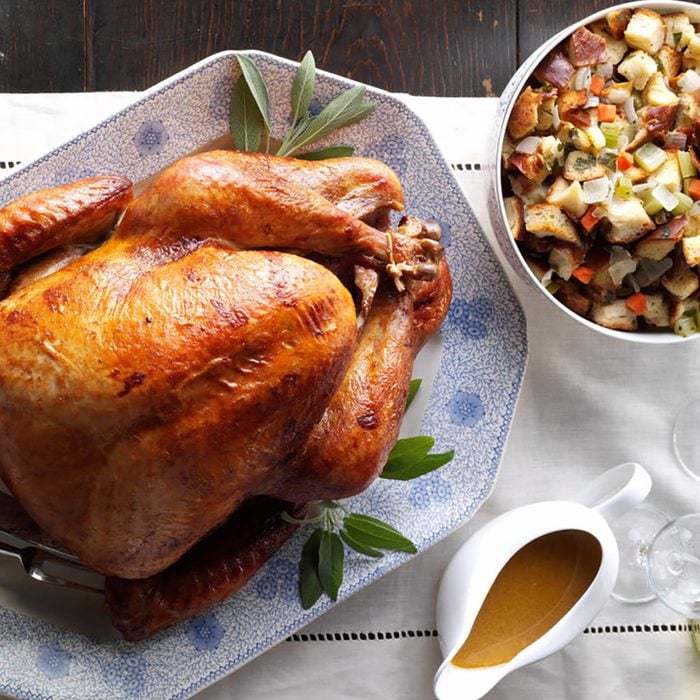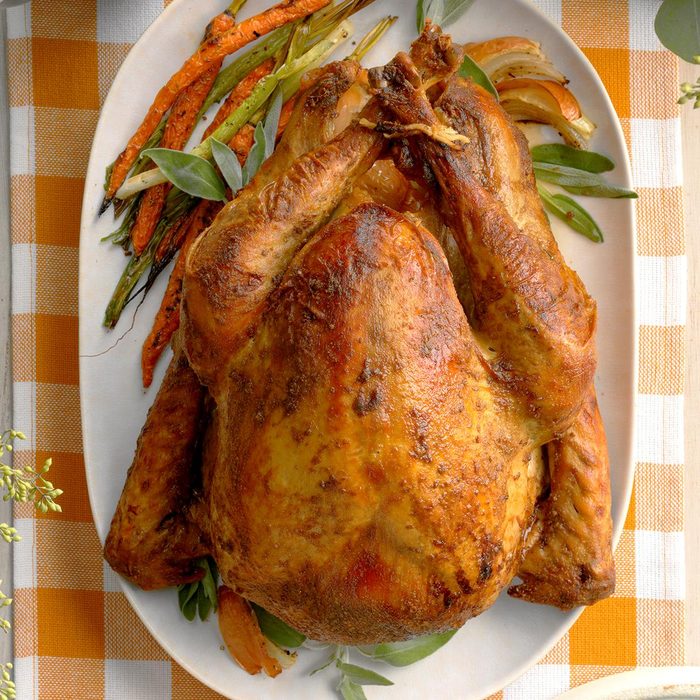
Season Under the Skin
It can be tempting to sprinkle your seasonings right on top of the frozen turkey (obviously after defrosting it) as you’d do with any other protein. To get the most flavor, however, it’s best to season under the skin. This is our greatest tip for teaching anyone how to season a turkey.
This puts those spices in direct contact with the meat for maximum impact. Plus, if you don’t like the skin you can peel it off after cooking without losing all the herby goodness.
When it comes to seasoning, salt and pepper are the right place to start. But you can expand upon these basics by using fall herbs like rosemary, thyme, and sage, which are natural accompaniments for turkey. You can branch out further with your favorite seasoning blends.
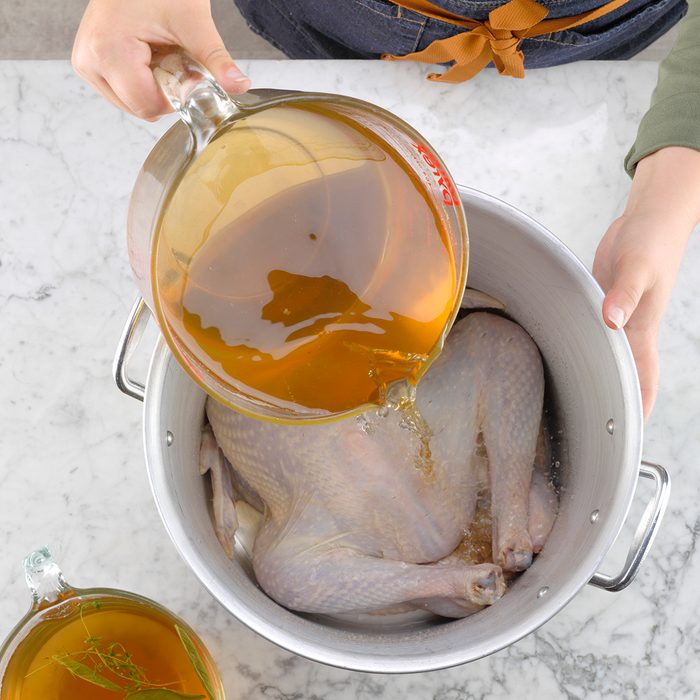
Brine Your Bird
To add extra flavor and tenderness to your Thanksgiving turkey, try a basic brine or you could even go for a dry brine. Soaking the turkey in this saltwater mixture helps to tenderize the meat while adding flavor and moisture throughout the entire turkey. The simplest of brines is plain ol’ saltwater, but we love to add herbs and spices to give the turkey as much flavor as possible. These turkey brine recipes will give you the inspiration you need.
But take heed, brining is a plan-ahead trick. Your bird should sit in the brine for at least four hours (though overnight is best, so start a full day ahead). And before you brine, make sure you have a food-safe container large enough to accommodate your bird.
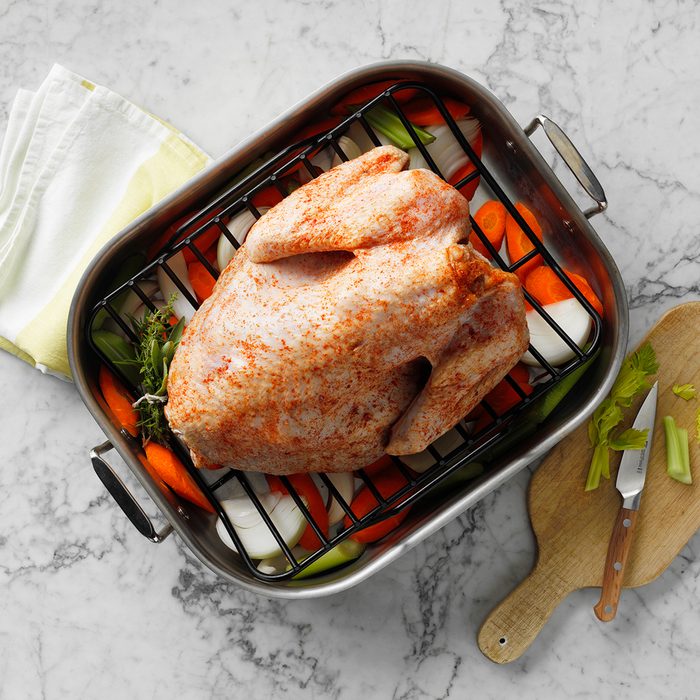
Season Inside the Turkey
Don’t limit your seasoning to just the exterior of your holiday main. Be sure to get your seasoning blend into all the nooks and crannies of the turkey—even on the inside. This will give your roast the most flavor possible.
Use this trick whether you’re roasting a turkey, grilling turkey, or even deep-frying a turkey.
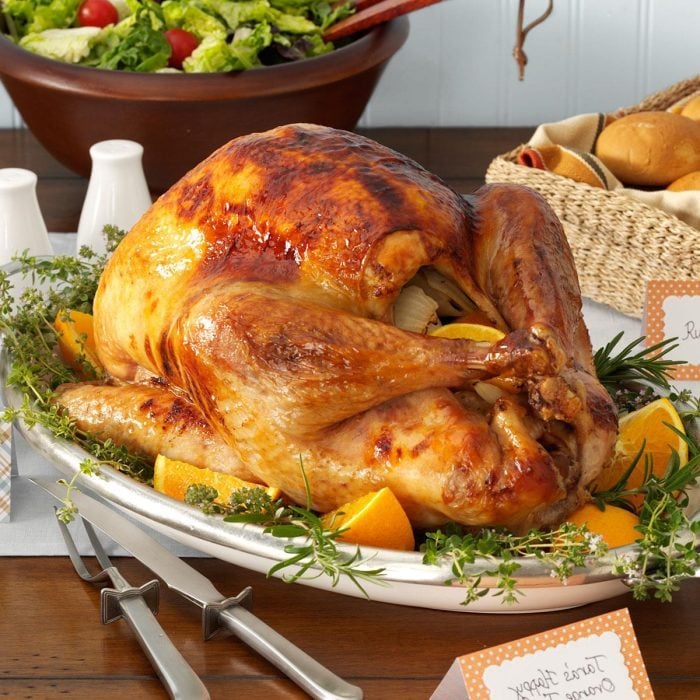
Fill with Aromatics
Instead of filling your bird with stuffing, fill it with aromatics. (News flash: Cooking stuffing inside a turkey can be dangerous.) The basics, like onion, garlic, thyme, rosemary, and sage, help lend that traditional Thanksgiving flavor.
Take your aromatics up a notch by adding halved lemons or oranges. The citrus will add a nice brightness to the turkey and keep it perfectly moist.
Here’s a full list of all the ways you can stuff your holiday turkey—that don’t include stuffing.
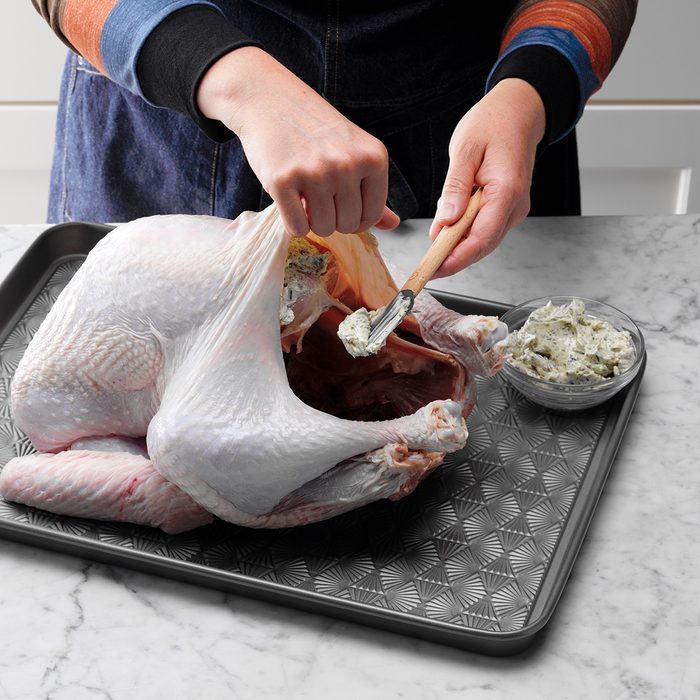
Coat with Flavored Butter
When hasn’t butter made something better? Rub flavored butter underneath the skin of your turkey to add another layer of flavor to your traditional turkey while also crisping up the skin.
This is really an easy way to add flavor to your main course, so for those hosting a Thanksgiving dinner, don’t be afraid to try this technique.
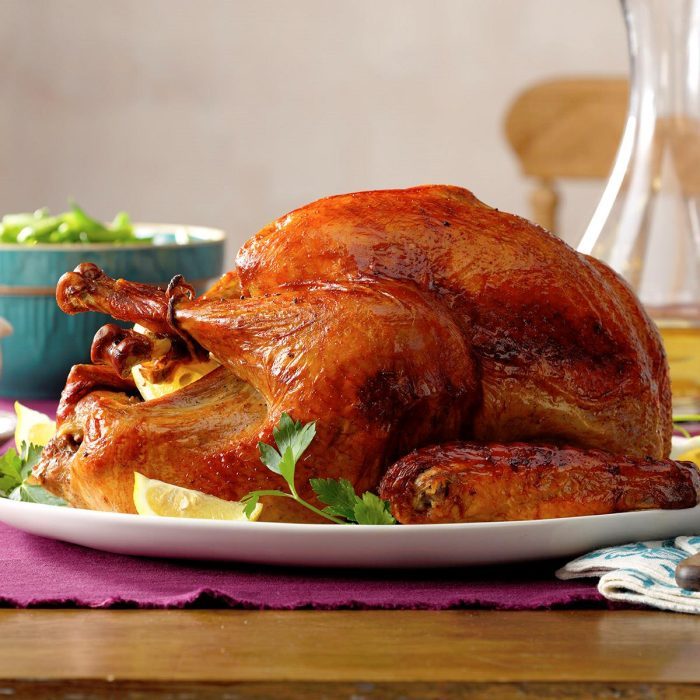
Try a Marinade
Marinades aren’t just for the grill! Try marinading your turkey in a mixture of broth, spices, and lemon juice, like in our Marinaded Thanksgiving Turkey for a roast that’s flavorful through and through.
Similar to brining, your turkey should sit in the marinade for a few hours to soak up all the delicious flavors.
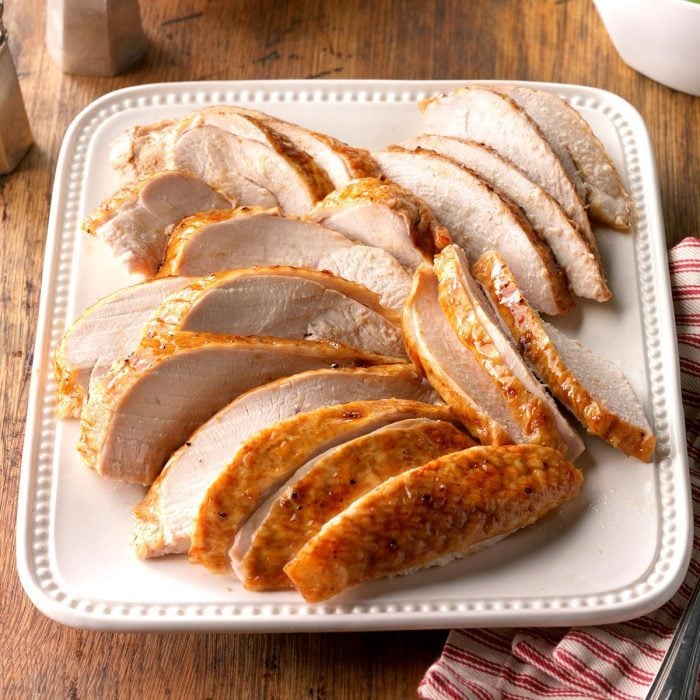
Glaze the Turkey
Layer on the flavor with a bright and aromatic glaze. Brushing on a glaze takes an already tasty turkey skin to the next level. Glazes are an easy and quick way to give your main course an extra boost.
You can make an apricot-glazed turkey with just four ingredients.

Crack Open a Beer
Just like you might use beer to make Can-Can Chicken or beef brisket, you can use beer to flavor your holiday turkey. Instead of basting your bird with drippings from the pan, baste with your go-to brew. No need to splurge on anything too fancy here, but make sure it’s a good beer that you’d enjoy sipping.
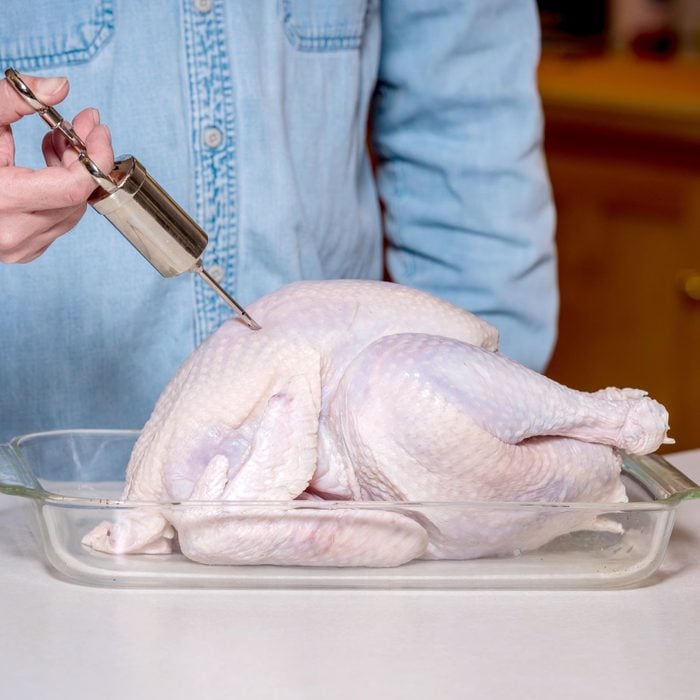
Inject Flavor
This method might seem a little intimidating, but it packs a serious punch when it comes to boosting your turkey’s flavor. Flavor injectors work by pumping extra ingredients (think broth and melted butter) right into the center of your bird for extra moisture and an extra tasty turkey.
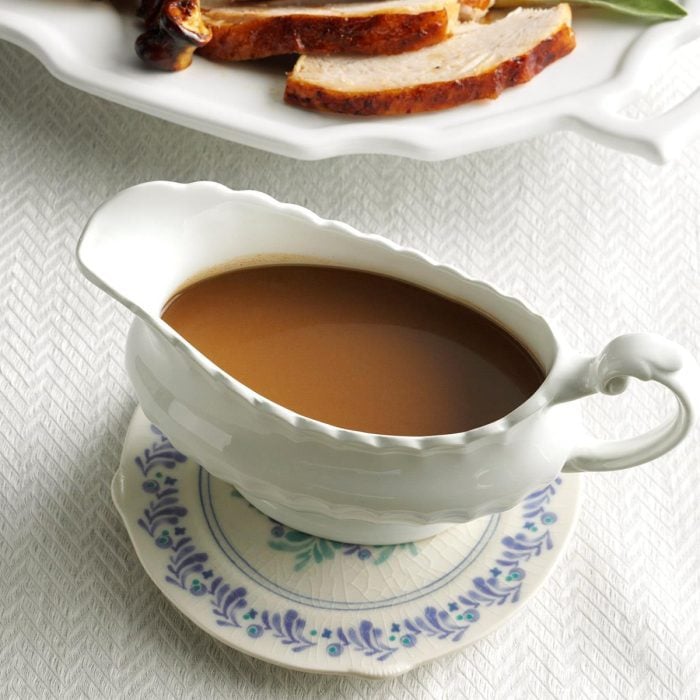
Layer on the Gravy
You can also season with a great gravy after carving the turkey. Follow our ultimate guide to gravy or even experiment with this make-ahead gravy recipe. A well-seasoned sauce like this adds so much to your main dish—and all the sides. After all, who doesn’t like their mashed potatoes smothered in gravy?
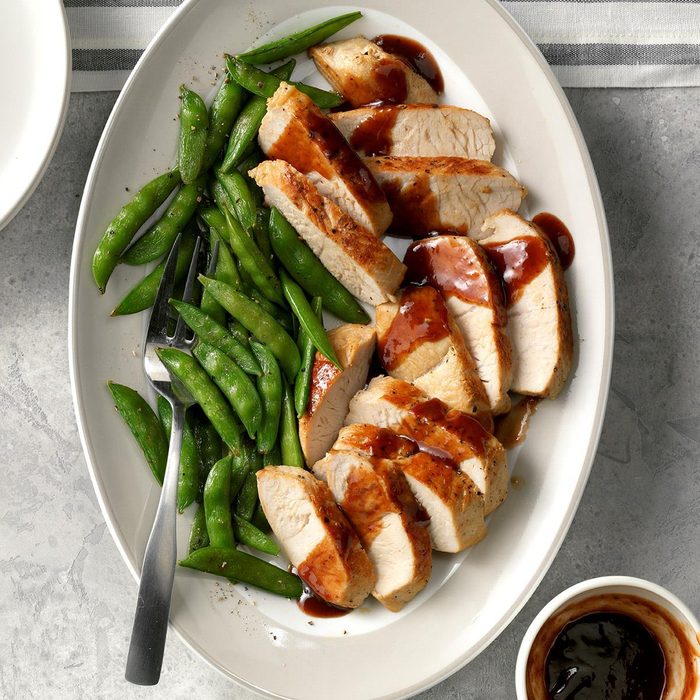
Serve It with a Sauce
Yes, gravy is the traditional topper for turkey, but you can add powerful and delicious flavors with different options. Fruit-based sauces, like this turkey with raspberry sauce or turkey with compote, are a tasty departure from the norm.

